

We fit a wide range of radiators. Everything from your standard Myson radiators to the modern panel radiators with fancy chrome tap valves.
If you want to add or replace a radiator to your central heating system, it’s easy enough for us to do. You can add a radiator at any point in the flow and return circuit, but we must make sure you don’t take heat away from the current radiators.

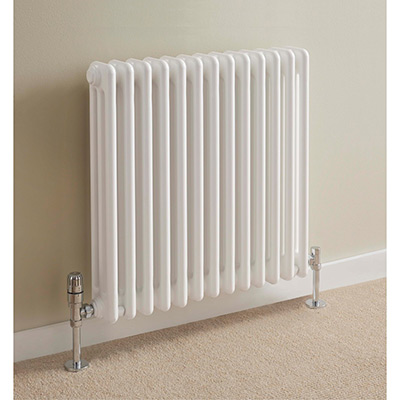
We need to work out the best position for your new radiator, and the size of radiator you’ll need. You can use an online BTU calculator to work out the size of radiator you need according to the type and size of room where you are installing it. Alternatively we can help advice you when quoting for the work.
It is important to Check the output of your boiler to ensure it can handle the extra strain of another radiator being added on. If your boiler is not capable of handling another radiator as it is then any additional load may cause it to fail.
Radiators are often installed underneath windows, because the warm air from the radiator meets the cool air from the window, and is carried around the room. However you may have one part of the room which feels colder, or the position may be dictated by furniture arrangements or available wall space.
It is worth spending a little time getting the position right as once it’s installed it’s a great deal more difficult to reposition it.
A Powerflush is a cleansing process which aims to remove deposits of sludge, rust and any other debris from your central heating system.
These contaminants, if left, can seriously affect the efficiency of a heating system and, in severe cases, a powerflush could be the only option available. Over time the water in your pipes, boiler and radiators deposits unwanted by products like rust. This rust (plus other dirt and debris) becomes an unpleasant, mud-like substance that professionals affectionately refer to as ‘sludge’.
Sludge in your heating system can cause blockages and corrosion which will lead to both inefficiency and / or breakdown. In extreme cases it can be so damaging that a complete boiler replacement is needed.
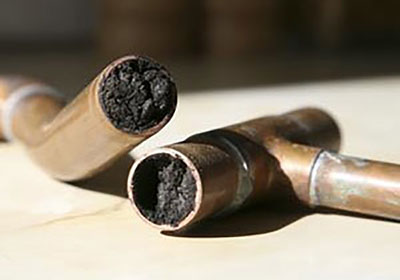
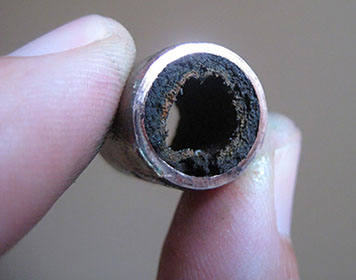
If you carry out regular servicing and maintenance (professional servicing is recommended annually) then a preventative Powerflush should only be necessary every 7-8 years to clear debris and prevent significant blockages from taking hold.
However, this will vary depending on the system you have. For example, some boilers use copper heat exchangers rather than stainless steel which will corrode quicker.
IMPORTANT: If you are planning to replace your boiler it’s important that the engineer performs a Powerflush before the installation. Otherwise, you risk contaminating the new boiler with damaging sludge and debris that’s hanging around in the old pipework.
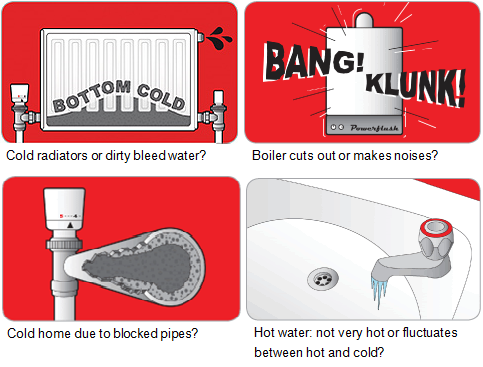
There are signs to look out for that suggest that all is not well in your central heating system.
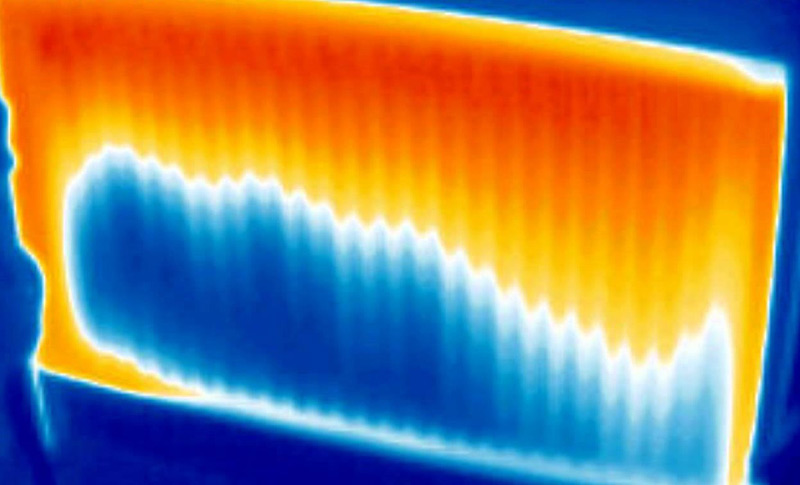
If any of these problems sound familiar to you, it’s time to give me a call. While a Powerflush may be all that is required to get your heating back on track, unfortunately it’s not always that simple. A system may be so damaged that it is actually cheaper to replace rather than repair.
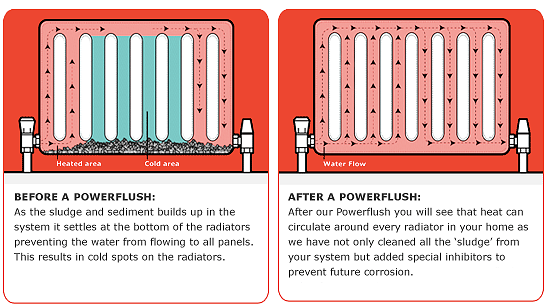
It’s not all doom and gloom; there are lots of positive reasons to get a Powerflush carried out too.
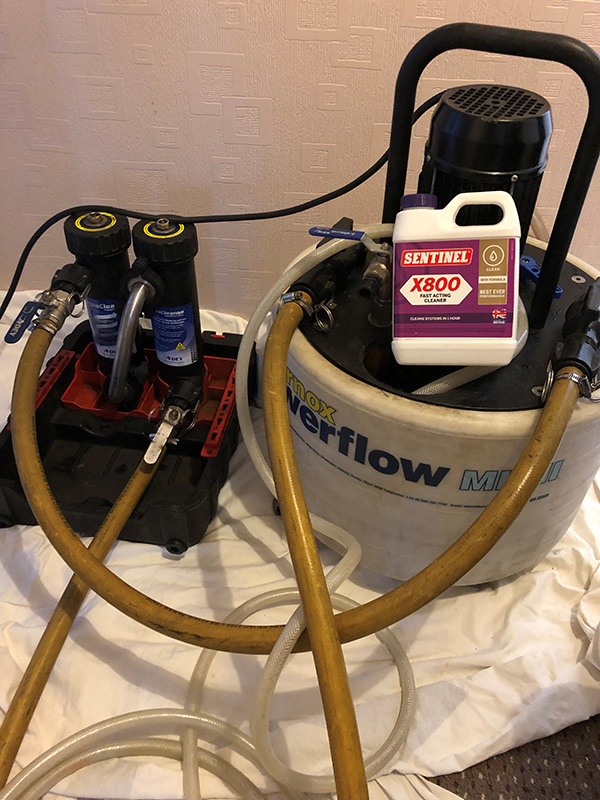
An engineer will connect a pump to your central heating system. If it’s a Combi it will be connected at the pump head but if it’s a System boiler it will be connected at the circulation pump. This pump will push special chemicals through the pipes, boiler and radiators.
This includes a chemical that will remove sludge and rust, a descaler to remove limescale and corrosion inhibitor to help prevent future rust from forming. The engineer will collect and dispose of any contaminated water, debris or particles that they remove from the system.
The engineer may also use special tools on the exterior of the radiator to dislodge stubborn blockages.
The whole process can last anything from 6 – 10 hours depending on the number of radiators in your home, the age of the system and the severity of the sludge in the system. We may find more problems than originally anticipated such as needing new parts to replace those that have been damaged beyond repair. Most Powerflush jobs are completed in one day but some of the more severe cases may require longer.
Not all companies will perform a Powerflush to the same standard. There are a range of chemicals and equipment on the market and, as with all industries, there are providers with varying levels of expertise and attention to detail.
I carry a top of the range Fernox powerflush MK2 machine with a professional twin magnaclean filter to clear the sludge. I was lucky enough to have been trained twice on how to Powerflush systems. Once on the British Gas Installation side of the business and once more when I transferred over to the Service and Repair side of British Gas.
Put simply, not really.
While there are Powerflushing kits for hire and instructional videos available on the internet, it’s a risky and complicated job. A professional will make a Powerflush look easy, clean and safe but the reality is it’s a job that has the potential to get very messy. Specialist chemicals and equipment should only be handled by those trained to do so.
It’s also possible that carrying out the work on your heating system by yourself may invalidate any manufacturer’s warranty you have. A professional engineer will provide you with a certificate to prove that the Powerflush has been carried out. This is crucial if you need to evidence to a manufacturer or insurance provider that you have had all work carried out by a professional.
Finally, if the work is completed incorrectly it could cause more damage than you had to begin with.
NOTE: Installing a magnetic filter will not deliver the same benefits as a Powerflush procedure, but it can protect a system (that is still working well) from future sludge blockages.
There are lots of factors that will affect the price of a Powerflush such as size and complexity of the heating system, not to mention any incidental troubleshooting that crops up. A Powerflush can cost anything between £300 to £1000. Sometimes there will be additional costs like extra descaler chemicals or replacing the TRVs.
It’s important that your central heating system is as efficient as it can be at all times and, although a Powerflush can be an expensive process, it can also save a lot of money over time in reduced heating bills.
Epsom, West Ewell, East Ewell, Ewell Village, Chessington, Worcester Park, Stoneleigh, Motspur Park, Raynes Park, Wimbledon, Leatherhead, Bookham, Ashstead, Sutton, West Byfleet, Byfleet, Esher, Cobham, Weybridge, Walton, Hersham, Surbiton, Berrylands, Tolworth, Hinchley Wood, Claygate, Long Ditton, Thames Ditton, Fetcham, Reigate, Chertsey, Sunbury-On-Thames, Hampton, Kingswood, Lower Kingswood, Walton on Hill, Burgh Heath, Tadworth, Molesey, Morden, Oxshott, Cheam, North Cheam, Coulsdon, Kingston, New Malden, KT1, KT2, KT3, KT4, KT5, KT6, KT7, KT8, KT9, KT10, KT11, KT12, KT13, KT14, KT15, KT16, KT17, KT18, KT19, KT20, KT21, KT22, KT23, KT24, SW20, SW19, Dorking, Guildford, Woking, Redhill, Crawley, Horsham, Ripley, Chobham, Bisley